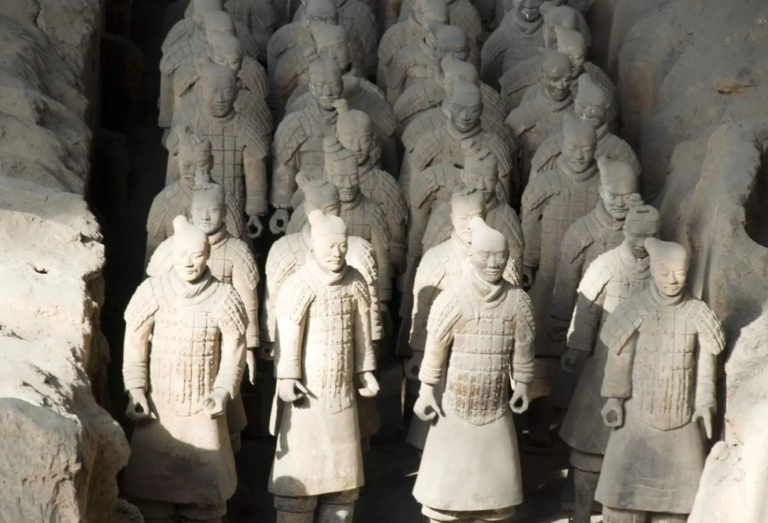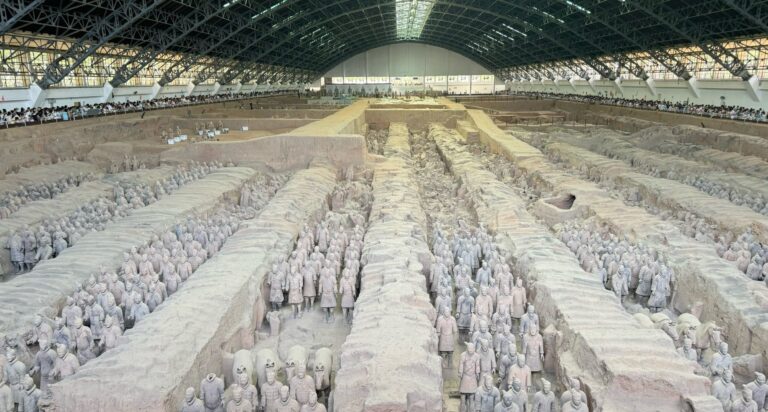Are they still excavating the Terracotta Army?
When my American friend asked, “Are they still digging up the Terracotta Warriors?”, there was a curiosity behind the question that spanned time and space. The Terracotta Warriors, an underground legion known as the “Eighth Wonder of the World”, is a far more complex archaeological process than we can imagine. Let us unravel the knots of history, slowly combing this archaeological saga that has lasted for forty years.
First, the amazing discovery under the loess
In the history-changing spring of 1974, a farmer from Xiyang Village in Lintong, Shaanxi Province was digging a well when his stiletto suddenly hit something hard. With the unearthed of the first terracotta figurine fragment, the whole world was awakened by the secret that had been sleeping for 2,200 years. The archaeological team at the time could not have imagined that they were dealing with an underground military formation covering an area of 20,000 square meters.

The shock of the Terracotta Warriors lies not only in the number – the three terracotta pits that have been discovered contain about 8,000 pieces of terracotta warriors – but also in the uniqueness of each warrior. Archaeologists have found that the terracotta warriors’ facial features, hairstyles, decorations and even armor patterns are all different, as if they could catch a glimpse of the work of Qin Dynasty craftsmen.
Second, never stop the archaeological clock
Over the past forty years, the archaeological work of the Terracotta Warriors has never really stopped. According to the latest data, the excavated area only accounts for 1/5 of the whole area of the mausoleum. just last year, the archaeological team discovered new burial pits on the edge of the terracotta pits, and unearthed precious relics such as bronze cranes and jade vessels. These discoveries have made experts realize that the complexity of Qin Shi Huang’s mausoleum is far beyond imagination.
Modern technology is rewriting the rules of archaeology. Aerial photography by drones builds a three-dimensional model of the entire mausoleum area, geological radar detects abnormal structures deep in the dungeon, and X-ray fluorescence spectrometer can non-destructively analyze the mineral composition of terracotta figurines. But even so, archaeologists still maintain a “scalpel-type fine” – only about 100 square meters of excavation each year, this caution stems from the reverence for cultural relics.
Third, and the game of time
Terracotta Warriors fragile beyond imagination. Freshly unearthed terracotta figurines attached to the surface of the colorful coating, but only a few minutes after contact with the air began to flake off. Archaeologists have discovered that these pigments contain rare minerals such as Egyptian blue and Chinese purple, but preservation techniques are still a world problem.
In the lab, scientists are trying to reinforce the terracotta figurines with nanomaterials and restore the broken parts with 3D printing technology. But the trickiest part is the microorganisms in the soil – the organic acids they secrete are slowly eroding the figurines. For this reason, the archaeological site has established a constant temperature and humidity “micro-environmental chamber”, and emergency protection of cultural relics is carried out immediately after each excavation.

New dimension of civilization dialogue
The archaeological process of Terracotta Warriors is becoming a new platform for civilization dialogue. The Metropolitan Museum of Art once held a special exhibition “Terracotta Warriors: The Eternal Guard of Qin Shi Huang”, which attracted millions of visitors to line up to visit. Kneeling terracotta warriors in the display case, its armor weaving process to the New York audience marveled – this diamond-shaped armor protection performance, after modern mechanical testing is still excellent.
More interesting is the elimination of cultural misinterpretations. Early Western reports often referred to the Terracotta Warriors as “mud people”, but the latest research has found that the inner cavity of the terracotta warriors of the bamboo and wood structure has been specially processed, both to reduce weight and increase the toughness. This “organic – inorganic composite” technology, so that military history experts to re-evaluate the height of the Qin Dynasty engineering.
V. A puzzle for the future
Standing in front of the glass display case of the Terracotta Warriors Museum, what we see is not only the miracle of clay and bronze, but also the epic of mankind’s game with time. The secrets of the depths of the underground palace may never be fully unveiled, just like the Egyptian pyramid chambers always remain mysterious.
When my American friend asked if we were still digging, I replied, “Yes, but there is no finish line in this archaeological marathon. Each new discovery rewrites our knowledge of ancient China, and the real miracle is that these terracotta figurines make us realize that the story of civilization is always being written.” After all, the desire to explore the unknown is the very bridge between the past and the future.







